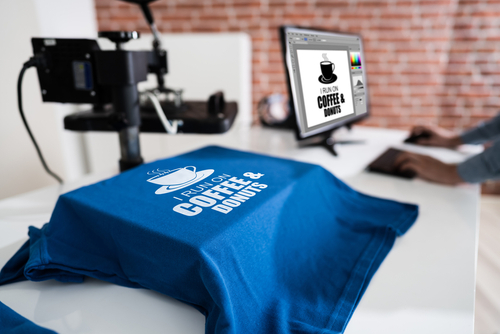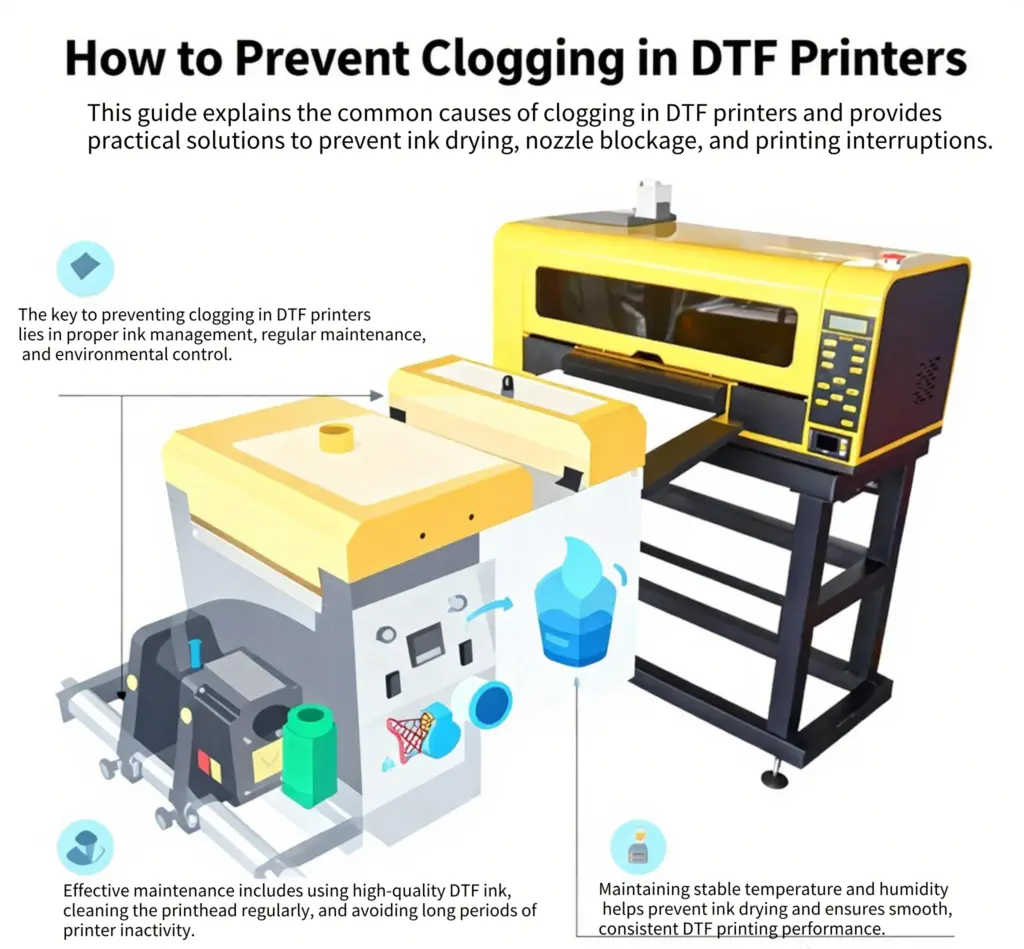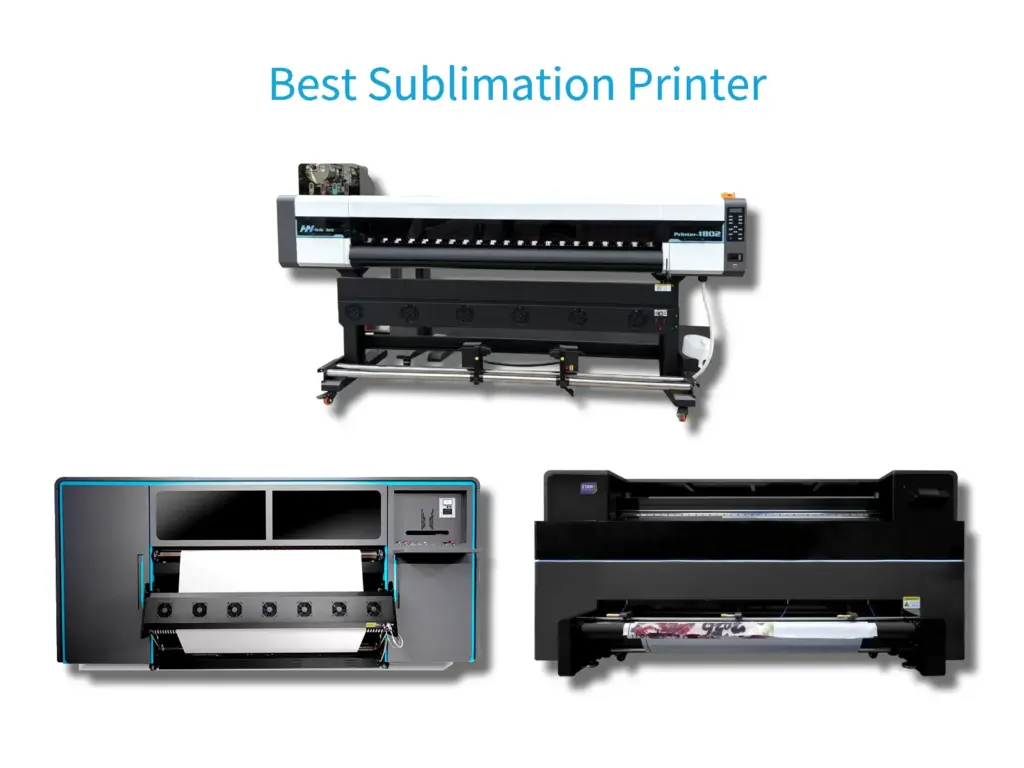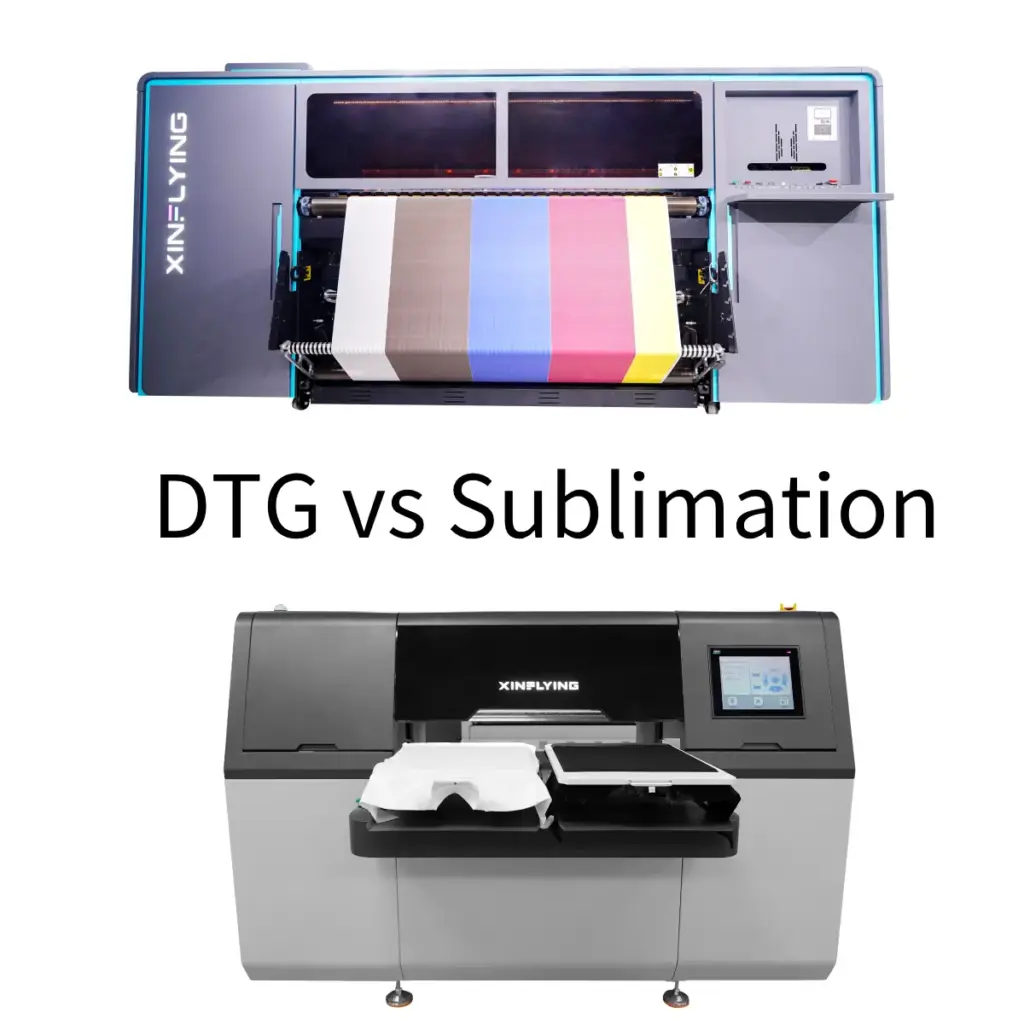Kumaş baskı, yıllar içinde önemli ölçüde gelişen bir sanattır, Tasarımları hayata geçirmek için çeşitli teknikler sunmak. İster özel tişörtler hazırlıyor olun, Moda için kumaş tasarlamak, veya promosyon ürünleri üretmek, Seçtiğiniz tekstil baskı teknikleri son üründe önemli bir fark yaratabilir. Bu rehber, 6 kumaş baskı teknikleri türleri, süreçlerini keşfetmek, uygulamalar, artıları, ve ihtiyaçlarınız için en iyi yöntemi seçmenize yardımcı olacak eksiler.
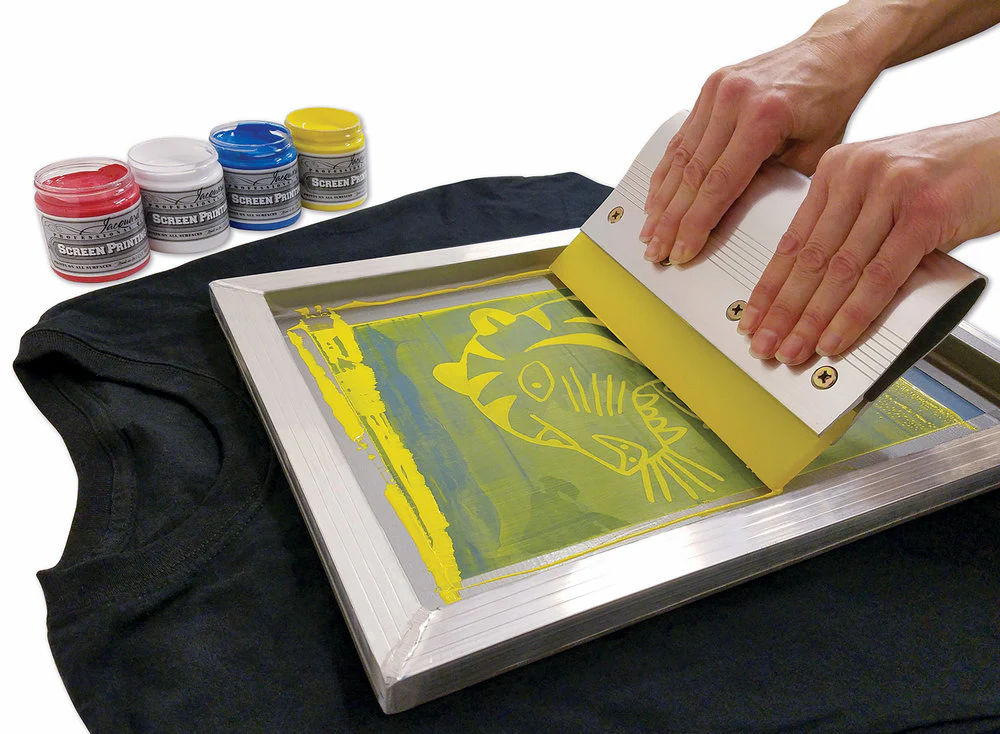
Ekran görüntüsü
Serigrafi en eski ve en yaygın kullanılan kumaş baskı tekniklerinden biridir. Bir şablon oluşturmayı içerir (veya ekran) ve baskı yüzeyine mürekkep katmanlarını uygulamak için kullanma.
İşlem
İşlem, ince bir ekranda bir şablon oluşturmakla başlar. Daha sonra mürekkep, bir silecek kullanılarak ağdan kumaş üzerine itilir. Tasarımdaki her renk ayrı bir ekran ve mürekkep katmanı gerektirir, Basit için uygun hale getirmek, Cesur Tasarımlar.
Uygulamalar
Ekran baskı, yüksek hacimli siparişler için idealdir ve tişörtler için yaygın olarak kullanılır, bez çantalar, ve posterler. Özellikle moda ve tanıtım endüstrilerinde popüler.
Artıları
- Dayanıklılık: Tekrarlanan yıkamalara dayanabilen uzun ömürlü baskılar üretir.
- Canlı renkler: Zengin sunar, Patlayan canlı renkler.
- Uygun maliyetli: Büyük partiler için ekonomik.
Eksileri
- Kurulum Süresi: Önemli kurulum süresi gerektirir, küçük siparişler için daha az verimli hale getirmek.
- Sınırlı detay: Karmaşık detaylara veya birçok renge sahip tasarımlar için ideal değil.

Doğrudan giysiye (DTG) Baskı
DTG yazdırma Tasarımları doğrudan kumaş üzerine yazdırmak için mürekkep püskürtmeli teknolojiyi kullanır. Giysiler için dev bir mürekkep püskürtmeli yazıcı olarak düşünün.
İşlem
Kumaş DTG yazıcıya yüklenir, Mürekkebin doğrudan yüzeye uygulandığı yer. Mürekkep liflere ıslatılır, Yumuşak ve dayanıklı bir baskı oluşturmak. Bu yöntem ayrıntılı ve çok renkli tasarımlar için harika.
Uygulamalar
Küçük ve orta boyutlu siparişler için mükemmel, DTG baskı, özel tişörtler için yaygın olarak kullanılır, özellikle karmaşık ve renkli tasarımları olanlar.
Artıları
- Detay ve renk: Yüksek çözünürlüklü görüntüleri geniş bir renk spektrumu ile yazdırabilir.
- Kurulum maliyeti yok: Küçük gruplar ve özel siparişler için ideal.
- Yumuşak kaplama: Dokunuşa yumuşak olan baskılar üretir.
Eksileri
- Maliyet: Daha büyük siparişler için birim başına daha yüksek maliyet.
- Daha Yavaş Hız: Ekran baskısına kıyasla daha yavaş üretim süreleri.

Doğrudan Filme (DTF) Baskı
Farklı kumaş baskı teknikleri arasında, DTF yazdırma çok yönlülüğü nedeniyle öne çıkıyor. DTF baskısı, bir tasarımın özel bir filme yazdırılmasını içerir, daha sonra ısı ve yapışkan toz kullanılarak kumaşa aktarılır.
İşlem
Tasarımlar özel bir DTF yazıcı kullanılarak bir evcil hayvan filmine yazdırılır. Basılı film yapışkan toz ile kaplanmıştır, erimiş, ve sonra bir ısı pastası kullanılarak kumaşa aktarıldı.
Uygulamalar
DTF baskı çok yönlü, Çeşitli kumaşlar için uygun, pamuk dahil, polyester, ve karışımlar. Genellikle özel kıyafetler ve promosyon ürünleri için kullanılır.
Artıları
- Çok yönlülük: Çok çeşitli malzemelere yazdırabilir.
- Detay: Ayrıntılı ve çok renkli tasarımları iyi işler.
- Dayanıklılık: Çatlamaya ve solmaya direnen dayanıklı baskılar üretir.
Eksileri
- Karmaşıklık: Birden fazla adım ve hassas kontrol gerektirir.
- Maliyet: İlk kurulum ve malzemeler pahalı olabilir.
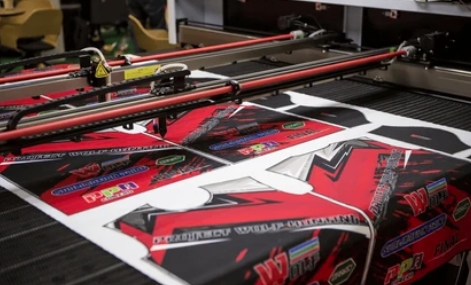
Süblimasyon Baskı
Süblimasyon baskısı boyayı kumaşa aktarmak için ısı kullanır, canlı ve kalıcı tasarımlarla sonuçlanır.
İşlem
Tasarım, süblimasyon mürekkebi kullanılarak özel süblimasyon kağıdına basılmıştır. Boyayı kağıttan kumaşa aktarmak için ısı ve basınç uygulanır, Moleküler seviyede bağlandığı yer.
Uygulamalar
Polyester ve polimer kaplı kumaşlar için en uygun, Süblimasyon baskısı spor giyim için yaygın olarak kullanılır, bayraklar, ve özel tanıtım öğeleri.
Artıları
- Canlı renkler: Parlak üretir, canlı, ve kalıcı renkler.
- Her all-over baskı: Tam kapsama baskıları için ideal.
- Dayanıklılık: Tasarımlar dayanıklı ve çatlamayacak, soymak, veya soluk.
Eksileri
- Kumaş sınırlamaları: Polyester veya polimer kaplı yüzeylerle sınırlı.
- Maliyet: Özel malzemeler nedeniyle pahalı olabilir.
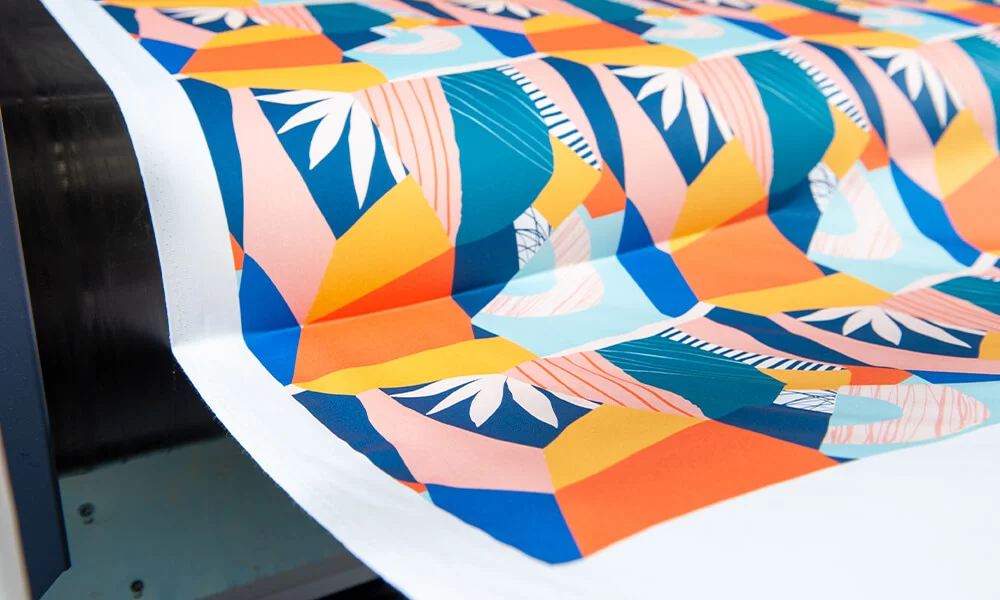
Pigment baskısı
Pigment baskısı, kumaş liflerinin üstüne oturan pigmentli mürekkepler kullanır, emmek yerine.
İşlem
Tasarım, pigmentli mürekkeplerle donatılmış bir yazıcı kullanılarak doğrudan kumaş üzerine basılmıştır.. Yazdırdıktan sonra, Kumaş genellikle pigmenti düzeltmek için ısı setidir.
Uygulamalar
Hem doğal hem de sentetik kumaşlar için ideal, Pigment baskısı modada kullanılır, ev tekstili, ve özel kıyafetler.
Artıları
- Çok yönlülük: Çok çeşitli kumaşlar için uygun.
- Renkli Huzur: İyi renk hızlılığı ve yıkama dayanıklılığı sunar.
- Detay: İnce detaylar ve canlı renkler yazdırabilir.
Eksileri
- Doku: Baskılar kumaş yüzeyinde sert hissedebilir.
- Solma: Düzgün sabit değilse, renkler diğer yöntemlerden daha hızlı solabilir.
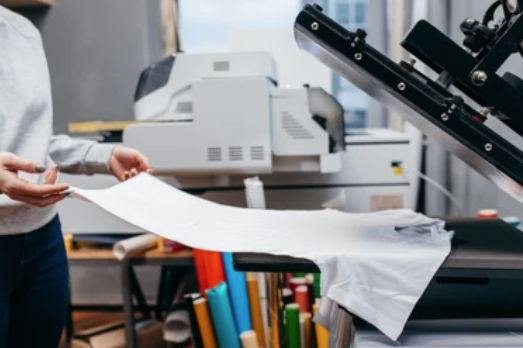
Isı Transferi Vinil (HTV) Baskı
HTV baskı, tasarımları vinil tabakalardan kesmeyi ve bunları kumaş üzerine ısıtmayı içerir.
İşlem
Tasarımlar bir plotter veya kesici kullanılarak vinil tabakalardan kesilir. Daha sonra kesilmiş vinil, aşırı malzemeyi ve ısıya sıkışmış olarak kumaş üzerine ayıklanır.
Uygulamalar
Spor giyim için yaygın olarak kullanılır, özel tişörtler, ve promosyon ürünleri, HTV baskı, bir kerelik tasarımlar ve kısa koşular için çok yönlü ve popülerdir..
Artıları
- Dayanıklılık: Dayanıklı ve yıkanabilir baskılar üretir.
- Çok yönlülük: Çeşitli renklerde ve kaplamalarda mevcuttur, metalik ve parıltı dahil.
- Kullanım kolaylığı: Kapsamlı kurulum gerektirmeyen basit işlem.
Eksileri
- Doku: Vinil baskılar ağır ve sert hissedebilir.
- Sınırlı detay: Son derece ayrıntılı veya çok renkli tasarımlar için ideal değil.
Hangi baskı yöntemlerini seçmelisiniz??
Doğru kumaş baskı yöntemini seçmek, özel ihtiyaçlarınıza bağlıdır. Kumaş türünü düşünün, tasarım karmaşıklığı, sipariş boyutu, ve bütçe.
Serigrafi basit tasarımlara sahip büyük partiler için harika, sırasında DTG ayrıntılı ve renkli özel baskılar için mükemmeldir. DTF kumaşlar arasında çok yönlülük sunuyor, Yüceltme, polyester için canlı renkler sağlar, pigment baskısı Çeşitli malzemeler için iyi çalışır, Ve HTV dayanıklı için mükemmel, özel baskılar.
Çözüm
Kumaş baskı dünyasında gezinmek ezici olabilir, Ancak, kumaş üzerine farklı baskı yöntemlerinin artılarını ve eksilerini anlamak, projeniz için en iyi seçime rehberlik edebilir.. Canlı arıyor olun, Büyük siparişler için dayanıklı baskılar veya uygun maliyetli çözümler, İhtiyaçlarınıza uyan bir baskı tekniği var. Kumaş tipinizi düşünün, Tasarım Ayrıntıları, ve yaratıcı vizyonlarınızı hayata geçirecek bilinçli bir karar vermek için üretim hacmi.
SSS
1. En dayanıklı kumaş baskı yöntemi nedir?
Ekran baskısı ve süblimasyon baskısı dayanıklılıklarıyla bilinir, Önemli solma veya çatlama olmadan çoklu yıkamaya dayanan.
2. Herhangi bir kumaşta dtf baskı kullanabilir miyim?
DTF baskı oldukça çok yönlüdür ve çok çeşitli kumaşlarda kullanılabilir, pamuk dahil, polyester, ve karışımlar.
3. Karmaşık için en iyi baskı yöntemi nedir, Çok renkli tasarımlar?
DTG baskı, ayrıntılı ve çok renkli tasarımlar için idealdir, Yüksek çözünürlüklü ve canlı renkler sunmak.
4. Süblimasyon baskısı belirli kumaşlarla sınırlı mı?
Evet, Süblimasyon baskısı, boyanın malzemeye aşılaması için gereken bağlanma işlemi nedeniyle polyester ve polimer kaplı kumaşlarda en iyi şekilde çalışır..
5. Kumaş baskı için kurulum süresini nasıl azaltabilirim?
DTG ve HTV yazdırması gibi yöntemler, ekran baskısına kıyasla minimum kurulum sürelerine sahiptir, onları küçük siparişler ve hızlı geri dönüşler için daha verimli hale getirmek.

